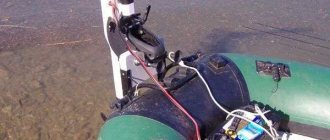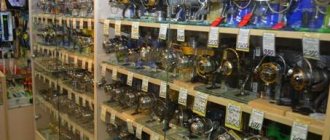“The Internet should always be like air” - the motto of the Japanese OCN provider reflects the development vector of Japan and Singapore. Both countries went through a thorny path in a short time, achieving a great economic miracle, each in its own way. The development of the Internet in these countries is quite different from those we wrote about earlier. The example of Japan and Singapore shows what heights a country and its technological development can reach if experts in their field and real managers are at the helm. The programs that were created by the ministries and governments of Japan and Singapore are described in as much detail as possible, and the result of the implementation of the programs speaks for itself. Let's try to figure out how these countries managed to make such an impressive leap.
Japan
Now Japan is one of the leading technological countries, but relatively recently, before the great economic miracle, with the development of technology and the Internet, everything was not so smooth. Back in 2000, the Internet in people's homes was only via a modem or telephone network, and some providers even offered a free connection for downloading an application that showed advertising in the corner of the screen. Lost connections, long download times for transferring files, and high telephone rates were typical problems of that time. Mobile Internet had already appeared, but it was very expensive, traffic was limited, and the speed was low. But why did things change so quickly?
ADSL
The Ministry of Communications realized the gravity of the situation and quite quickly developed a plan for the development of Internet connections for the home. The main condition of the plan was to provide all residents of the country with high-speed Internet at an affordable price. The state-owned NTT company pioneered the transition from dialup (56 kbit/s) and ISDN (64 kbit/s) to a home fiber-optic network. In 2001, ADSL (1.5 Mbit/s) appeared on the market. Then it gained about 20 thousand users, and in 2003, at a speed of 24 Mbit/s, it already reached 10 million. Thus, Japan even managed to overtake the United States and South Korea in the number of high-speed Internet users.
Then in the late nineties, cable operators began offering broadband services, but at that time it was too expensive - and users quickly found cheaper alternatives. In 2001, SoftBank Corporation offered its subscribers an ADSL connection (12 Mbit/s) for $30, while competitors' same package cost twice as much. This was the beginning of a price war, which led to a reduction in the price of the service package and an increase in Internet connection speed. The race ended with the fact that in 2004, Japan had the lowest cost of Internet access services using ADSL technology in the world: only $35.
This same race marked the beginning of the expansion of the fiber optic network field.
FTTH
In 2002, NTT offered a new service: fiber to the home (FTTH). The company laid optical fiber free of charge; all that was required from the owners was permission for these actions. Moreover, two months of using the network were free! NTT had strong competition from Tepco, which launched a real war for the consumer, reducing the price of connection and increasing its speed. 100 Mbps unlimited for $60 per month, and 1 Gbps for $80. This made it possible to abandon the telephone network. By 2004, 52.1% of households had access to the Internet, more than half of them using broadband.
Japan has a unique model for deploying a fiber optic network: the last kilometer is built in an aerial manner on towers shared between operators. This technology makes it possible to reduce construction costs and increase resistance to earthquakes.
Source
VDSL
Due to the popularity of fiber optic networks, ADSL technology has evolved into VDSL broadband. The price for using it has dropped greatly; the connection was made via a free modem. Companies offered free connection for up to six months; all you had to do was leave your address and sign a contract. Due to the abundance of companies providing such a service, the Japanese managed to use the Internet for up to five years without spending a yen.
PHS
While Japan successfully implemented its plan and occupied a leading position in various criteria, in 2005 the mobile Internet still left much to be desired. The fact is that the Willcom operator network was a PHS network, the simplest radiotelephone standard with the ability to switch connection bases and modem communication up to 64 Kbps. This standard is considered to be cellular communications for the poor. But they could not refuse it: the number of subscribers grew at an incredible speed, the service package expanded to Internet communications and telephone calls without restrictions, and the coverage area covered 95% of the country. And Wi-Fi was available only in some establishments and at large public transport stations. Back in 2003, there were 1,624 wireless Internet access points in the country - and by April 2004, their number had grown to 5,350. In 2005, all major railway stations and hotels in Japan received access to wireless high-speed communications.
The long-awaited 3G
Japanese communicator EM-One based on Windows Mobile 5.0 OS
But in 2007, the ice broke and EM-MOBILE and a new 3G network appeared on the mobile operator market, but under special conditions: only in the three largest cities; communication at the data level; without voice calls due to the lack of a telephone license from the new operator. But the operator offered a new communicator EM-One, superior in functionality to Nokia and Apple, with the ability to connect to high-speed Internet (3.5 Mbit/s in the coverage area without any restrictions). But, please note, without the phone function. But with such an Internet, this problem did not seem so acute.
The fastest internet in the world
In 2013, the Japanese Internet provider So-net Entertainment launched the fastest Internet. Nuro's new network was based on fiber optic technology, providing download speeds of up to 2 Gbps and upload speeds of 1 Gbps. The price for this pleasure was $51 per month. But here’s one caveat: signing a contract with the provider for two years and connecting cost $535.
At the moment, according to the OpenSignal report, 3G/4G mobile Internet coverage in Japan is 94.52% - and this is the second result in the world, the country is second only to South Korea. The average mobile Internet speed is 21.25 Mbit/s (ninth in the world).
5G - a new generation network
A pilot version of the 5G network will be used in South Korea during the 2021 Winter Olympics. This network will precede 5G standardization. And a standardized commercial 5G network will appear in Japan for the Summer Olympic Games in 2020.
The phenomenon of modern Japan - “Internet refugees”
Internet cafes in Japan are very atypical. You can sometimes stay in them overnight, and the “working poor” live there for years. And not at all because the Japanese are too involved in digital life (although this is also true). Japan's unemployment rate has been falling in recent years, but in 2010 it stood at 6%. Despite the fact that now by Western standards this figure is small - 3%, the problem remains very acute. More often than not, if there is a wave of layoffs, a large company can say goodbye to tens of thousands of employees.
Source
But a small percentage of unemployed people is not the main reason for the emergence of “Internet refugees.” Due to the high cost of real estate, even working citizens cannot afford to rent housing and pay more than half of their salary for it. And rooms measuring one by two meters in an Internet cafe cost about $25 per night and $600 per month. The price includes the rental of a computer with Internet connection, the ability to watch a variety of movie discs and access to a large number of comics. There is only one shower for 25-30 rooms, you will have to pay about 3 dollars for it. For regular visitors, an Internet cafe can provide long-term housing and even official registration.
The Japanese government has become very interested in the social phenomenon of “internet refugees” and has begun extensive research into the problem with the help of non-governmental social organizations and the Ministry of Health, Labor and Welfare.
The problem of suicide
It is no news that the Japanese nation ranks first in the world in suicide rates every year. With the development of the Internet, new ways of organizing them have appeared. Thus, the phenomenon of suicides by agreement arose: strangers find each other online and agree to commit suicide together or commit suicide simultaneously in different places. In 2005, for example, the world went around the news of the suicide of seven people.
Case two
If your phone does not support a Japanese SIM card, you can:
a) rent a phone along with a SIM card
(regular push-button, so you will have the opportunity to make calls within Japan and write SMS; smartphone - and use all the benefits, including the Internet);
b) buy yourself a phone
in installments in Japan, where a SIM card will be included (in fact, a pretty good option, but when you return home you will have to look for people who will remove the lock on your phone so that you can insert a regular Russian SIM card);
An example of such a purchase: the Y! mobile company offers to buy a simple flip phone with the ability to use a navigator, the Line social network (2 GB per month), free calls and SMS - 2138 yen per month with an installment plan for 2 years (if the contract is terminated, a penalty is paid in the amount of 10,260 yen. Of course, you can buy an iPhone 7, Samsung Galaxy S7 Edge and other new products in about the same way. For example, when you buy an IPhone SE 16GB from Softbank, you automatically bind yourself to a SIM card from their company. Because companies provide big discounts just to attract customers - if you pay in installments for 2 years and meet all the conditions, you end up paying for the phone not 56,880 yen, but 10,800 with a monthly payment of 450 yen. Yes, you heard right - at the current rate this comes out to about RUB 225 per month, but for 2 years you will only be able to use the proposed tariff plan, which includes only 5 GB per month.
Fight against piracy
Japan is one of the world leaders in the fight for Internet property rights. In October 2010, a rather radical law appeared in the country, according to which any user must pay a fine ($25 thousand) or serve a sentence in prison (two years) if he downloaded any content protected by copyright. And if a person downloaded a file from his PC illegally, then the fine increases to 130 thousand dollars, and the prison term - up to ten years.
Thus, in February 2021, the seventh series of arrests took place for downloading and distributing pirated content. Over the course of two days, 44 people were arrested in 29 prefectures across the country.
Perfect Dark
But this does not yet prevent the existence of Perfect Dark, a Japanese peer-to-peer file-sharing client for Microsoft Windows.
The anonymity of the Perfect Dark network is based on the refusal to use direct connections between end clients, the unknown of IP addresses and the complete encryption of everything possible. More specifically, on the mixnet system: the direction of traffic movement is subject to a known probability, and the distributed file storage (unity) does not have a specific structure, which complicates attempts to prove the illegality of file sharing. Data is stored and transmitted in encrypted blocks, separate from the keys used to encrypt the blocks.
Internet censorship
After the earthquake and accident at the Fukushima nuclear power plant, Japanese authorities created a special commission that was responsible for removing any information related to the history of the nuclear crisis. Authorities have put intense pressure on mobile phone, internet and cable TV providers to stop transmitting information about the state of affairs at the Fukushima nuclear power plant on the grounds that the information is harmful to public order and morals. As a result, the country's population began to trust the government and the media less.
Also in 2012-2013, a number of laws were introduced to prohibit online insults to the Korean and Chinese populations due to territorial disputes.
Singapore
Singapore is the pearl of Southeast Asia, a country of high technology. Cellular communications here have excellent coverage and impeccable signal levels. Wi-Fi is available in all hotels, and many pay phones and internet cafes can be found in the cities.
The beginning of the Singapore Internet
Before the global spread of the Internet, Singapore was the first country to launch an interactive image information service for the public: Teleview. It was developed jointly by the Telecommunications Authority of Singapore (TAS) and the British company GEC-Marconi.
At the end of 1987, testing of the service began using specially designed terminals. Two years later, the network expanded, and the growing popularity of PCs led to the appearance of additions to them. The first providers of the Teleview service were the Singapore Press Union, the Housing and Development Board and the Singapore Stock Exchange. They showed general news, business and real estate news, and stock prices in real time.
Subscribers connected to Teleview via 1200-2400-bit modems, and then via 9600-14400-kilobit modems. At first the service was free, but then they introduced payment for using telephone lines.
Later, the Teleview service developed a text terminal - an interface for interacting with the Internet. Pine was used to handle email, and Lynx made web browsing possible. Later, the SingNet provider began offering SLIP/PPP Internet connection via modem.
According to the OpenSignal report, 3G/4G mobile Internet coverage in Singapore is 94.42%: fifth highest in the world. The average mobile Internet speed is 32.19 Mbit/s, this is the second world indicator after South Korea.
Project [email protected]
In December 2006, the Infocomm Development Authority of Singapore (IDA), as part of the Intelligent Nation 2015 project, introduced the [email protected] . The goal of the program is to provide free wireless Internet access to everyone in areas with dense traffic: in the central business district area, near large shopping centers, in residential urban centers. Access speed increased to 1 Mbit/s on September 1, 2009 and to 2 Mbit/s in April 2013. The system is free until March 31, 2021.
Next Gen NBN
At the beginning of September 2010, Singapore Internet providers shared plans to create a new generation broadband network - Next Gen NBN. It is a nationwide ultra-high-speed fiber optic network. It offers broadband speeds of up to 1 Gbps at competitive prices relative to ADSL and cable connections. Already in August 2011, network coverage reached 75% in the country, in mid-2012 - 95%.
In March 2015, provider ViewQwest launched its 2Gbps fiber optic service, making it the world's fastest home broadband along with Japan's. And cable and ADSL services were gradually phased out in June 2021.
Intelligent Nation 2015
Source
Intelligent Nation 2015 is a ten-year program to develop the country's telecommunications network, launched by the Singapore government.
Program goals:
- Take a world-leading position in enhancing the impact of telecommunications networks on economic and social systems.
- Double the added value of the telecom industry to S$26 billion.
- Triple export revenues in the telecom industry to S$60 billion.
- Create 80 thousand jobs.
- Increase home broadband coverage to 90%.
- Ensure that every family with schoolchildren has a computer.
List of countries with the fastest internet in the world 2021
| Place | A country | Wed. speed (Mbit/s) | Load time 5GB | ± 2021 (place) | ± 2021 (speed) |
| 1 | Singapore | 60,39 | 00h 11m | — | 5,26 |
| 2 | Sweden | 46,00 | 00h 14m | — | 5,84 |
| 3 | Denmark | 43,99 | 00h 15m | 1 | 10,45 |
| 4 | Norway | 40,12 | 00h 17m | 3 | 10,99 |
| 5 | Romania | 38,60 | 00h 17m | 13 | 17,27 |
| 6 | Belgium | 36,71 | 00h 18m | 2 | 9,34 |
| 7 | Netherlands | 35,95 | 00h 18m | -2 | 2,43 |
| 8 | Luxembourg | 35,14 | 00h 19m | 25 | 19,62 |
| 9 | Hungary | 34,01 | 00h 20m | 6 | 10,85 |
| 10 | Jersey | 30,90 | 00:22 | 4 | 7,6 |
| 11 | Switzerland | 29,92 | 00:22 | -1 | 2,99 |
| 12 | Japan | 28,94 | 00:23 | — | 4,47 |
| 13 | Latvia | 28,63 | 00:23 | -7 | -1,73 |
| 14 | Taiwan | 28,09 | 00:24 | -11 | -6,31 |
| 15 | Estonia | 27,91 | 00:24 | -2 | 3,8 |
| 16 | Spain | 27,19 | 00h 25m | 5 | 7,59 |
| 17 | Lithuania | 27,17 | 00h 25m | -6 | 2,05 |
| 18 | Andora | 27,14 | 00h 25m | 24 | 15,07 |
| 19 | Hong Kong | 26,45 | 00h 25m | -10 | -0,71 |
| 20 | USA | 25,86 | 00h 26m | 1 | 5,86 |
| 21 | Slovakia | 25,30 | 00h 26m | 2 | 6,45 |
| 22 | Madagascar | 24,87 | 00h 27m | 67 | 21,38 |
| 23 | France | 24,23 | 00:28 | 14 | 10.8 |
| 24 | Finland | 24,00 | 00:28 | -5 | 3,1 |
| 25 | Germany | 24,00 | 00:28 | -1 | 5,2 |
| 26 | New Zealand | 23,77 | 00:28 | 4 | 6,92 |
| 27 | Czech | 23,71 | 00:28 | 1 | 6,4 |
| 28 | Slovenia | 21,41 | 00:31 | -3 | 3,04 |
| 29 | Portugal | 21,28 | 00h 32m | -12 | -0,44 |
| 30 | South Korea | 20,63 | 00h 33m | -14 | -2,27 |
| 31 | Bulgaria | 20,2 | 00h 33m | -4 | 2,66 |
| 32 | Poland | 19,73 | 00h 34m | 3 | 4,85 |
| 33 | Canada | 19,48 | 00h 35m | -7 | 1,11 |
| 34 | Iceland | 18,85 | 00h 36m | 13 | 8,3 |
| 35 | United Kingdom | 18,57 | 00h 36m | -4 | 2,06 |
| 36 | Ireland | 18,22 | 00h 37m | — | 4,3 |
| 37 | Liechtenstein | 17,71 | 00:38 | 7 | 6,31 |
| 38 | Austria | 17,51 | 00:39 | -4 | 2,25 |
| 39 | Barbados | 17,08 | 00:39 | 26 | 10,46 |
| 40 | Thailand | 17,06 | 00h 40m | -11 | 0,21 |
| 41 | Macao | 16,12 | 00h 42m | -21 | -4,4 |
| 42 | Croatia | 15,60 | 00:43 | -2 | 3,03 |
| 43 | Italy | 15,10 | 00:45 | 3 | 4,39 |
| 44 | Gibraltar | 14,71 | 00:46 | -6 | 1,53 |
| 45 | Moldova | 13,88 | 00h 49m | — | 3,13 |
| 46 | Malta | 13,60 | 00:50 | 2 | 3,43 |
| 47 | Russia | 13,51 | 00:50 | -4 | 1,92 |
| 48 | Malaysia | 13,30 | 00h 51m | 15 | 6,61 |
| 49 | Aruba | 13,27 | 00h 51m | 48 | 10,15 |
| 50 | Serbia | 13,00 | 00:52 | -9 | 0,75 |
| 51 | Turks and Caicos | 11,70 | 00:58 | 11 | 4,96 |
| 52 | Australia | 11,69 | 00:58 | 3 | 3,99 |
| 53 | Kosovo | 11,64 | 00:58 | New entry | New entry |
| 54 | Guernsey | 11,58 | 00:58 | -2 | 2,82 |
| 55 | Cayman islands | 11,49 | 00h 59m | -16 | -1,66 |
| 56 | Trinidad and Tobago | 11,37 | 01h 00m | 37 | 8,09 |
| 57 | Greece | 11,3 | 01h 00m | — | 3,74 |
| 58 | Ukraine | 11,28 | 01h 00m | -4 | 3,1 |
| 59 | Cyprus | 11,10 | 01h 01m | -6 | 2,86 |
| 60 | Monaco | 11,02 | 01h 01m | -28 | -5,11 |
| 61 | US Virgin Islands | 10,55 | 01h 04m | 16 | 5,41 |
| 62 | Isle Of Man | 10,54 | 01h 04m | -12 | 1,53 |
| 63 | Faroe islands | 10,38 | 01h 05m | -5 | 2,9 |
| 64 | Kenya | 10,11 | 01h 07m | -13 | 1,28 |
| 65 | Bahamas | 9,95 | 01h 08m | -16 | -0,11 |
| 66 | Belarus | 9,21 | 01h 14m | -2 | 2,53 |
| 67 | Bermuda | 9,13 | 01h 14m | 2 | 3,19 |
| 68 | Macedonia | 8,82 | 01h 17m | -9 | 1,48 |
| 69 | Jamaica | 8,25 | 01h 22m | -3 | 1,65 |
| 70 | Israel | 7,64 | 01h 29m | -10 | 0,44 |
| 71 | Bosnia and Herzegovina | 7,37 | 01:32 | -10 | 0,37 |
| 72 | Panama | 7,05 | 01h 36m | 36 | 4,75 |
| 73 | Puerto Rico | 6,88 | 01h 39m | -6 | 0,44 |
| 74 | Montenegro | 6,74 | 01:41 | -3 | 0,89 |
| 75 | Vietnam | 6,72 | 01:41 | -1 | 1,26 |
| 76 | South Africa | 6,38 | 01h 47m | 4 | 2,02 |
| 77 | Georgia | 6,25 | 01:49 | -7 | 0,39 |
| 78 | Uruguay | 6,19 | 01:50 | 70 | 4,88 |
| 79 | Saint Kitts and Nevis | 6,12 | 01h 51m | 48 | 4,4 |
| 80 | Curacao | 5,99 | 01h 54m | 41 | 4 |
| 81 | Sri Lanka | 5,84 | 01h 56m | 4 | 2,01 |
| 82 | Cuba | 5,83 | 01h 57m | New entry | New entry |
| 83 | Indonesia | 5,77 | 01h 58m | -8 | 0,58 |
| 84 | Martinique | 5,74 | 01h 58m | 25 | 3,44 |
| 85 | Mexico | 5,69 | 01:59 | -29 | -1,9 |
| 86 | Albania | 5,56 | 02h 02m | -8 | 0,89 |
| 87 | Dominica | 5,38 | 02.06. | 14 | 2,7 |
| 88 | India | 5,19 | 02h 11m | 31 | 3,13 |
| 89 | Philippines | 5,18 | 02h 11m | -2 | 1,49 |
| 90 | Bahrain | 5,05 | 02:15 | 6 | 1,92 |
| 91 | Türkiye | 4,90 | 02h 19m | -8 | 0,94 |
| 92 | Chile | 4,74 | 02:24 | 36 | 3,07 |
| 93 | Sint Maarten | 4,68 | 02:25 | 50 | 3,29 |
| 94 | British Virgin Islands | 4,46 | 02h 33m | -21 | -1,03 |
| 95 | Kazakhstan | 4,45 | 02h 33m | -13 | 0,45 |
| 96 | Dominican Republic | 4,41 | 02h 34m | -28 | -1,81 |
| 97 | UAE | 4,35 | 02h 36m | -16 | 0,18 |
| 98 | Laos | 4,29 | 02:39 | 26 | 2,35 |
| 99 | Guadeloupe | 4,21 | 02h 42m | 30 | 2,58 |
| 100 | Myanmar | 4,15 | 02:44 | 18 | 2,06 |
| 101 | Brunei | 4,15 | 02:44 | -15 | 0,32 |
| 102 | Jordan | 4,11 | 02:46 | -1 | 1,13 |
| 103 | Cambodia | 4,10 | 02:46 | -5 | 1 |
| 104 | Saudi Arabia | 4,09 | 02:46 | -5 | 1,03 |
| 105 | Morocco | 4,03 | 02h 49m | -26 | -0,35 |
| 106 | Costa Rica | 3,96 | 02h 52m | 30 | 2,43 |
| 107 | Armenia | 3,94 | 02h 53m | -15 | 0,65 |
| 108 | Belize | 3,93 | 02h 53m | -32 | -1,21 |
| 109 | Antigua and Barbuda | 3,85 | 02h 57m | 16 | 1,99 |
| 110 | Oman | 3,83 | 02:58 | -6 | 1,22 |
| 111 | Qatar | 3,80 | 02h 59m | -27 | -0,09 |
| 112 | Tunisia | 3,67 | 03h 05m | -24 | 0,17 |
| 113 | Peru | 3,31 | 03h 26m | 28 | 1,9 |
| 114 | Colombia | 3,25 | 03h 29m | — | 1,13 |
| 115 | Cape Verde | 3,24 | 03h 30m | 5 | 1,24 |
| 116 | Argentina | 3,18 | 03h 34m | 43 | 2,03 |
| 117 | New Caledonia | 3,16 | 03:36 | -6 | 0,93 |
| 118 | Guatemala | 3,13 | 03h 38m | -27 | -0,18 |
| 119 | St. Lucia | 3,00 | 03:47 | 3 | 1,02 |
| 120 | Ghana | 2,88 | 03h 56m | -10 | 0,58 |
| 121 | Zimbabwe | 2,86 | 03:58 | -16 | 0,37 |
| 122 | Honduras | 2,80 | 04h 03m | -32 | -0,67 |
| 123 | El Salvador | 2,78 | 04h 05m | -16 | 0,44 |
| 124 | Guam | 2,77 | 04h 06m | -12 | 0,55 |
| 125 | Kuwait | 2,76 | 04h 06m | -12 | 0,55 |
| 126 | Ecuador | 2,76 | 04h 07m | 23 | 1,48 |
| 127 | Fiji | 2,65 | 04:17 | 27+ | 1,41 |
| 128 | Guyana | 2,64 | 04h 18m | 45 | 1,75 |
| 129 | Nicaragua | 2,64 | 04h 18m | 31 | 1,5 |
| 130 | Rwanda | 2,64 | 04h 19m | -13 | 0,53 |
| 131 | Namibia | 2,62 | 04:20 | -5 | 0,81 |
| 132 | Saint Vincent and the Grenadines | 2,6 | 04:22 | New entry | New entry |
| 133 | Brazil | 2,58 | 04:24 | 5 | 1,09 |
| 134 | Burundi | 2,56 | 04h 26m | New entry | New entry |
| 135 | Azerbaijan | 2,52 | 04:31 | -33 | -0,15 |
| 136 | Suriname | 2,47 | 04h 36m | 16 | 1,22 |
| 137 | Grenada | 2,46 | 04h 37m | New entry | New entry |
| 138 | Haiti | 2,42 | 04h 42m | -35 | -0,2 |
| 139 | Mauritius | 2,39 | 04h 45m | -2 | 0,86 |
| 140 | Uganda | 2,39 | 04h 45m | -24 | 0,27 |
| 141 | China | 2,38 | 04h 47m | -7 | 0,83 |
| 142 | Reunion | 2,38 | 04h 47m | 26 | 1,41 |
| 143 | French Guiana | 2,37 | 04h 47m | 2 | 1,03 |
| 144 | Nepal | 2,36 | 04h 49m | 25 | 1,39 |
| 145 | Iran | 2,20 | 05h 09m | -12 | 0,64 |
| 146 | Zambia | 2,03 | 05:35 | -40 | -0,42 |
| 147 | Maldives | 1,98 | 05h 45m | -17 | 0,36 |
| 148 | Bangladesh | 1,97 | 05h 46m | -4 | 0,63 |
| 149 | Tanzania | 1,96 | 05h 48m | -10 | 0,47 |
| 150 | Papua New Guinea | 1,92 | 05h 55m | 7 | 0,73 |
| 151 | Bolivia | 1,90 | 06:00 | 21 | 0,99 |
| 152 | Nigeria | 1,86 | 06.07. | -57 | -1,29 |
| 153 | Mozambique | 1,76 | 06:27 | -13 | 0,31 |
| 154 | Palestine | 1,75 | 06:29 | -31 | -0,21 |
| 155 | Paraguay | 1,73 | 06:35 | 24 | 0,98 |
| 156 | Seychelles | 1,72 | 06h 37m | -84 | -4,12 |
| 157 | Ivory Coast | 1,70 | 06:42 | -2 | 0,48 |
| 158 | Liberia | 1,61 | 07h 04m | -43 | -0,51 |
| 159 | Sierra Leone | 1,61 | 07h 04m | New entry | New entry |
| 160 | Lebanon | 1,6 | 07h 06m | 3 | 0,53 |
| 161 | Mongolia | 1,57 | 07h 14m | -29 | -0,03 |
| 162 | Sudan | 1,56 | 07h 18m | — | 0,46 |
| 163 | Kyrgyzstan | 1,52 | 07h 28m | 3 | 0,54 |
| 164 | Botswana | 1,50 | 07h 34m | — | 0,43 |
| 165 | Angola | 1,49 | 07h 37m | — | 0,44 |
| 166 | Gambia | 1,45 | 07h 50m | New entry | New entry |
| 167 | Libya | 1,42 | 07h 59m | 7 | 0,53 |
| 168 | French polynesia | 1,42 | 07h 59m | -22 | 0,08 |
| 169 | Senegal | 1,40 | 08h 08m | -11 | 0,23 |
| 170 | Egypt | 1,33 | 08h 32m | -14 | 0,11 |
| 171 | Pakistan | 1,32 | 08h 38m | — | 0,41 |
| 172 | Cameroon | 1,29 | 08h 47m | -5 | 0,32 |
| 173 | Go | 1,27 | 08h 56m | -20 | 0.03 |
| 174 | Swaziland | 1,26 | 09.03. | New entry | New entry |
| 175 | Algeria | 1,25 | 09:07 am | -14 | 0,14 |
| 176 | Venezuela | 1,24 | 09:09 am | 6 | 0,54 |
| 177 | Benin | 1,23 | 09:13 | 3 | 0,5 |
| 178 | Iraq | 1,21 | 09:25 | -47 | -0,39 |
| 179 | Malawi | 1,17 | 09:44 | -9 | 0,25 |
| 180 | Afghanistan | 1,15 | 09:54 | -30 | -0,12 |
| 181 | Gabon | 1,13 | 10:04 am | 7 | 0,72 |
| 182 | Sao Tome and Principe | 1,13 | 10:05 am | New entry | New entry |
| 183 | Ethiopia | 1,13 | 10:06 am | -36 | -0,21 |
| 184 | Uzbekistan | 1,02 | 11:06 am | -6 | 0,26 |
| 185 | Mayotte | 0,97 | 11h 41m | New entry | New entry |
| 186 | Vanuatu | 0,95 | 11h 56m | -2 | 0,32 |
| 187 | Mali | 0,95 | 12:01 pm | -11 | 0,11 |
| 188 | Tajikistan | 0,94 | 12:03 pm | -11 | 0,11 |
| 189 | Djibouti | 0,92 | 12h 19m | -38 | -0,33 |
| 190 | Congo (DRC) | 0,86 | 13:12 | -9 | 0,14 |
| 191 | Congo | 0,85 | 13h 20m | -5 | 0,3 |
| 192 | Burkina Faso | 0,84 | 13h 35m | -5 | 0,35 |
| 193 | Niger | 0,83 | 13:43 | New entry | New entry |
| 194 | Syria | 0,81 | 14:04 | -11 | 0,13 |
| 195 | Mauritania | 0,70 | 16h 14m | -80 | -0,84 |
| 196 | Guinea | 0,65 | 17:28 | -21 | -0,19 |
| 197 | Somalia | 0,60 | 18h 56m | -12 | -0,02 |
| 198 | Turkmenistan | 0,56 | 20h 22m | -56 | -0,84 |
| 199 | East Timor | 0,49 | 23h 13m | New entry | New entry |
| 200 | Yemen | 0,31 | 36h 52m | -11 | -0,03 |
[CHOSEN FOR YOU] Interesting facts about cats that you may not know










